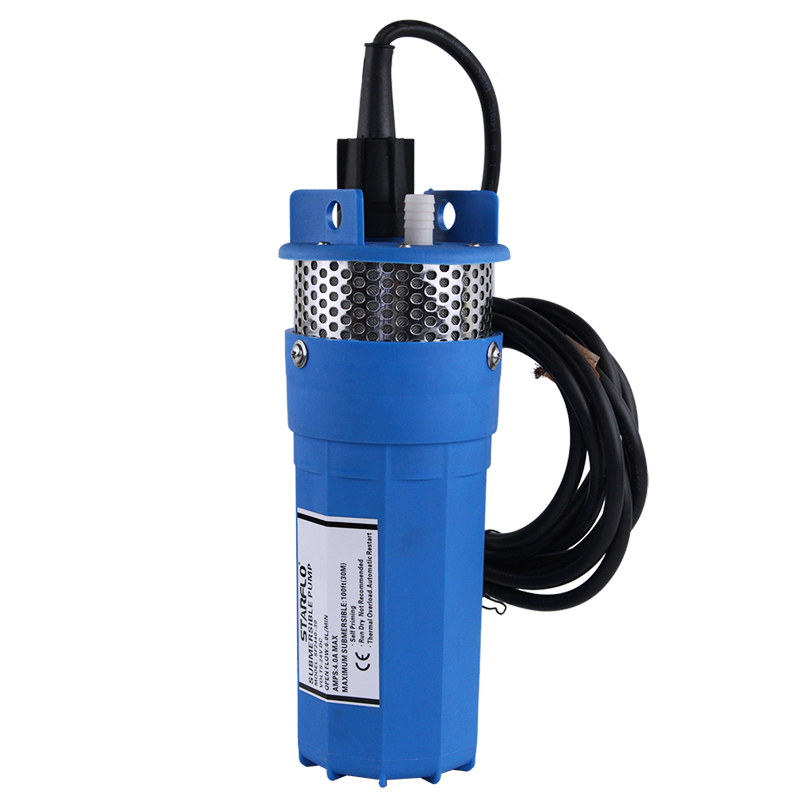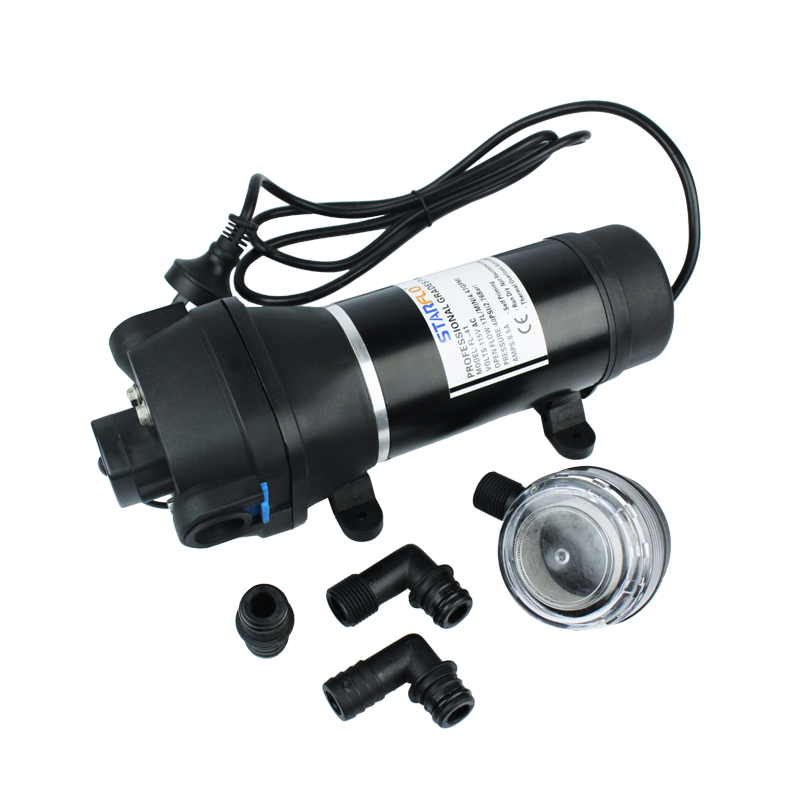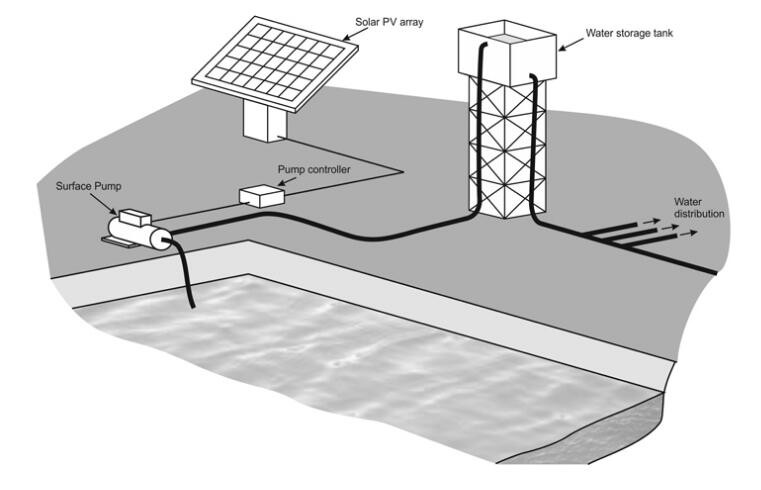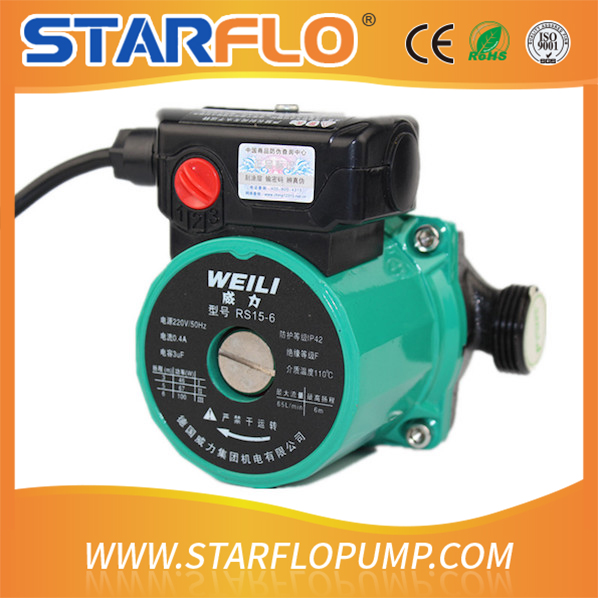-
Email :
Julia@starflopump.com -
call :
0592-6212219 -
we’are open :
24hours available
Email :
Julia@starflopump.com
call :
0592-6212219
we’are open :
24hours available
Similar Flojet 110V AC Bottled Water Dispensing System For Refrigerator
5 Gallon Drinking Water Hand Pump Bottled Water Dispenser For Hone Ice Maker/Coffee Maker Read More +STARFLO 0.75 Liters Marine RV Water Pump And Accumulator Tank System
STARFLO 0.75L Solar Pressurized Accumulator Tank For RV Marine FEATURES & BENEFITS • Smoother flow, quieter water systems • Internal rubber membrane eliminates maintenance and allows universal mounting. • Better control of hot water temperatures • Simply fitted to new or existing systems • Longer pump life, lower battery drain • Snap-in port fittings • Port Size:1/2” MNPT inlet and outlet ports • Application: RV, Boat,Marine SPECIFICATION OF WATER ACCUMULATOR TANK: Model Internal VoluInme Pre-charge Pressure Max Operating Pressure Air Fill Valve SFAT-125-075 0.75 L 23.5 OZ 10 PSI 0.7 BAR 125 PSI 8.6 BAR standard automotive style tire valve Read More +
2017-04-19 09:40:19
The consistent taking off of the cost of power pushes individuals to search for approaches to lessen electric receipts. In the event that you imagine that the main way you can drop down your energy bills is by ceasing from utilizing AC equipment, musical frameworks, and other real apparatuses, reconsider. Sunlight based power is certainly the cleanest wellspring of vitality. There is no blazing of coals or other relic powers and at the time it doesn’t create nursery gasses. In this way, it truly doesn’t have any unkind impact on nature. There is positively no restriction to sun oriented power. There is all that could possibly be needed to go round for everybody; there could never be a period when sun powered vitality would be depleted. Actually, the measure of sun oriented vitality achieving the terrain every moment is more than the vitality expended yearly by the whole planet. The wide usage of solar pump can be seen in most part of the world as most of the individuals are nowadays considering to use these pump ranges to accomplish their varied purposes. The best thing with a solar pump system is that you can get water when you require without even making environment hazardous or to put lots of load on to your pocket in terms of maintenance and as well as others. Government is also subsidizing in this segment and helping individuals to install a solar pump at their venue and to contribute towards making environment hazards free.
Read More
2017-04-19 09:41:15
RV water pumps take the water from your tank, up into the piping system of your rig. The RV water pump’s job is to increase the flow of the water, and stabilize it’s pressure. In other words, it’s pretty important. The average RV comes with a 50-gallon to 200-gallon fresh water tank. This water is your lifeline when traveling, or when camping without hookups. Your ability, to consume the water in your tanks, comes via the little wonder known as: the RV water pump. Here are a water pump’s two main jobs: Job #1 The first job of the RV water pump is to provide pressured water from your rig tank. RVs store their water in built-in tanks, which are usually located in the base of the motorhome or trailer. Your unit has three types of tanks. The fresh water, gray (or used) water, and black (or waste) water tank. A pump allows you to get water from the kitchen and bathroom faucets, and keeps the shower and toilet flowing. Most RV water pumps are small and run off your RV battery. (Generally, that means water pumps are 12 volts). There are a few major RV water pump brands. The key is finding a simple, easy to install pump, that features a quiet motor. Aquatec boasts two units which are both quiet and offer basic installation. Remember, an RV water pump will make noise, especially if you have multiple faucets open at one time. This is not unusual. Look for a pump with a 4-chamber design. They offer greater water and pressure flow, along with a smooth overall action. A good RV water pump will produce an even flow of water. A jerky flow indicates variable speeds, with not enough pressure. If choosing a unit at a service center, ask them to demonstrate the differences between the models that they use, before deciding on a purchase. Job #2 The second job, of the RV water pump, is to provide a certain amount of water per minute. Trailers or campers may use pumps that produce 3.5 gallons of water per minute. Larger motorhomes may use pumps that provide 5.3 or greater gallons per minute. Gallons of water per minute equate to pressure per square inch, or psi. When your rig is connected to city water, it will often bypass the RV water pump, because city water is already pressurized.
Read More
2017-04-07 17:07:49
Solar water pumping systems are a modern but field proven means of pumping water in locations where access to grid power is not available, or where the grid is not reliable. These systems use photovoltaic (PV) cells to convert sunlight into electricity to power DC pumps which can be used to pump groundwater or surface water. A typical system comprises the following elements: The water source: This could be a groundwater source, such as a well or borehole. Alternatively it could be a surface water source such as a river or pond. The pump: Depending on depth to water, pumps of either the submersible type or suction type can be used. In the most common solar systems the pumps are powered by DC current, which require considerably low operation and maintenance costs than conventional AC pumps and provides greater efficiency. The PV array: Arrays are formed from groups of photovoltaic (PV) cells, aligned to give suitable sun exposure at the site location. The PV cells generate DC power when the sun is shining. The PV array is normally mounted on a stand or mount to allow it to be aligned to maximize sun exposure. The pump controller: This unit allows the pump to be controlled and regulated and will be connected to the pump and electrical grounding system. Optional battery bank: The PV units only generate power when the sun is shining, and so do not work at night and on cloudy days, One solution to provide continuous pumping is to connect banks of batteries to the PV array to store excess power, to be drawn on when there is no sun. Optional generator back up: Another option is to provide a petrol or diesel driven AC generator: intelligent control units make the changing between power supplies automatic. Other renewable energy sources: Solar PV can also be combined with a wind turbine: taking maximum advantage of the natural energy resources – solar power when the sun is shining and wind power when the wind is blowing. Discharge pipework: This pipework carries the water from the pump to the storage tank and to the end use. It is important that the discharge pipework is designed so that the pipe materials, diameter, layout and fittings are arranged to minimize frictions losses in the pipework. This will help maximize the efficiency of the pumping system. Water storage tank: A storage tank is a key part of most solar pumping systems, to ensure constant availability of water, 24 hours per day. The tank capacity should be designed store enough water to allow for water demand on rainy or cloudy days (no sun days) when pumping will be limited. The size and dimensions of the storage tank should be determined based on the required number of days storage. In reality, each solar water pumping system is unique. Getting the most benefit from a system requires research and design before the first PV module and pump is purchased and installed. Each component must be carefully matched, and proper planning is essential – so the final system will be efficient and reliabl...
Read More
2017-04-07 17:11:21
A circulating pump works by pumping or circulating liquids, gases or slurries in a loop or closed circuit. Their most common application is circulating water in a hydronic cooling or heating system. Since the materials that they pump move around in closed circuits, they do not expend lot of energy. For example, when water is initially pumped upwards, it circulates around a system and eventually returns to its original position. From this point, a pump only needs enough power to counteract the drag or inertia in pipes to propel the water forward efficiently. This process is repeated over and over again. Since they require little energy to function, circulating pumps designed for homes are small enough to fit alongside plumbing systems. Pump Structure Circulating pumps for home use are typically compact electrically powered centrifugal pumps. In general, their sole purpose is to produce hot water on demand. Without them, users will have to wait for some time for water to heat each time they turn on dedicated taps. The three main components of a circulating pump are: Support bearings Pump impeller Motor rotor An electric motor rotor powers the impeller, which then thrusts the water forward or upward. An impeller is like a turbine in that it's a wheel with a series of angled blades. The impeller spins extremely fast, pushing water out and compressing it. The motor is sealed in a waterproof casing and is connected to the impeller. While circulating pumps are small enough to be mounted alongside plumbing systems, industrial type pumps have large designs and motors are usually fixed on separate locations away from the piping system. Hot Water Recycling One of the most common purposes of home use circulating pumps is to eliminate the wait for water to heat once a tap is turned on. In a typical hot water system, hot water is produced by the heater and flows through the pipes and then to the taps. Once the taps are turned off, the hot water in the pipes cools off. The heater system will only heat water once a tap is turned on again, which would require some time and cause water wastage. With a circulating pump, the wait for water to heat is eliminated and a steady supply of hot water is ensured all the time. Energy consumption is minimal and little water is wasted. They are also ideal for areas where water is in limited supply. Home use pumps are typically made of bronze to prevent corrosion, since oxygenated potable water flows through them constantly. Solar Water Heating Another popular and relatively new application for circulating pumps is in solar water heating systems. In this set-up, water is pumped to the solar collector, where it will be heated. That water then moves its way to a water tank, where heat is passed on to the water. The pump will again send cooler water back to the solar collector for heating.
Read MoreCopyright © 2015-2026 Xiamen Starflo Industry and Trade Co., Ltd.
top
Online Now